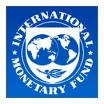The Debt of Developing Countries: The Devastating Impacts of IMF-World Bank “Economic Medicine”
Millennium Development Goals The Failure of the Debt System

As the World Bank and the International Monetary Fund hold their annual meeting in Washington 11-13th October 2013 it is necessary to take a look at the state of the Millennium Development Goals (MDG). |1| The history of economic development is strewn with attempts to correct the “mistakes” of development policy. The preferred method is to add new elements to the agenda. This approach has led to adding an ever increasing number of issues, from environmental concerns to social policies, into the policy discussions.
The results of this practice are clear to see: of the original 8 Millennium Development Goals, only 2 have been met, with serious doubts regarding the possibility of meeting the other 6. The track record of the current development agenda is very disappointing |2|.
So, the issue is not to add new elements to the framework, but to assess if the elements that are already present are working, and if they are not, can they be eliminated. The one element that stands out on that regard is Debt, as an economic, social and political development policy tool.
Since the implementation of the Marshall Plan in Europe, policy circles have been burdened with the notion that injections of capital and fresh financial resources constitute one of the basic components of development. Based on this premise, the World Bank has tried throughout the last 69 years to help countries to borrow their way into development. In many cases, the living conditions of hundreds of millions of people in the World have been degraded as a result of the debt based policies forced on them by the World Bank and the IMF with the complicity of their own governments |3|.
Instead of providing developing countries with fresh resources, the debt system has forced them to give priority to payments to creditors over the provision of basic social services. According to World Bank data, in 2010 alone, developing countries paid out $184 billion on debt service, about three times the annual resources required for the fulfillment of the MDGs. Even more troublesome, between 1985 and 2010 net public debt flows to developing countries, that is the difference between debt inflows and debt payments, have reached -$530 billion |4|. To place this number in context, this is the equivalent of five Marshall Plans.
Throughout this time, debt has been used by the IFI´s and creditor countries alike to push developing countries to adopt policies that, if anything, prevent them from securing minimum living conditions for their populations. From the privatization and downsizing of public services, to opening internal markets to imports which has seriously undermined food sovereignty, the policies enforced upon developing countries have crippled their capacity to achieve their own internal development.
- Eric Toussaint
Therefore, if something needs to be done, it is to cancel the public debts of developing countries. Contrary to what skeptics say, this debt represents no more than a drop in the bucket: in 2010, it reached $1.6 trillion (total public external debt), or less than 5% of the resources devoted by the US Government to bail-out the banks |5|. If such a massive amount of resources can be marshaled to secure the bonuses of banking executives, is it too much to ask to ask for a small share of those same resources to secure better living conditions for hundreds of millions of people around the world? Clearly this is a political question, rather than an economic one, debt continues to be the major obstacle to development.
As CADTM has advocated during the last 24 years, let’s be rid of it.
Notes
|1| For a critical analysis of the MDG, see Damien Millet and Eric Toussaint, “Debt, the IMF and the World Bank, sixty questions, sixty answers”, Monthly review press, New York, 2010, Q4 : What are the Millenium Developpement Goals(MDG)? p.27
|2| “Millennium development goals – the key datasets you need to know”, available at: http://www.theguardian.com/global-d…
|3| Eric Toussaint, The World Bank: A Critical Primer, Pluto Press, London, 2008, available at: http://cadtm.org/The-World-Bank-A-c… See also: Eric Toussaint, doctoral thesis in political science, presented in 2004 at the Universities of Liège and Paris VIII: “Enjeux politiques de l’action de la Banque mondiale et du Fonds monétaire international envers le tiers-monde” (“Political aspects of the World Bank and the International Monetary Fund actions toward the Third World”), http://cadtm.org/Enjeux-politiques-… French only)
|4| See Damien Millet, Daniel Munevar, Eric Toussaint, “2012 World Debt Figures”, available at: http://cadtm.org/2012-World-debt-figures
|5| Calculated on the basis of the costs analysis undertaken by the Levy Institute, which estimates the total cost at $29 trillion. See, Felkerson, J. (2011), “$29,000,000,000,000: A Detailed Look at the Fed’s Bailout by Funding Facility and Recipient”, Levy Institute Working Paper 698.
Daniel Munevar, economist, CADTM Colombia, and Eric Toussaint, Doctor in Political sciences, Senior Lecturer at the University of Liège, is the President of CADTM Belgium (Committee for the Abolition of Third-World Debt, www.cadtm.org ), and a member of the Scientific Committee of ATTAC France.

